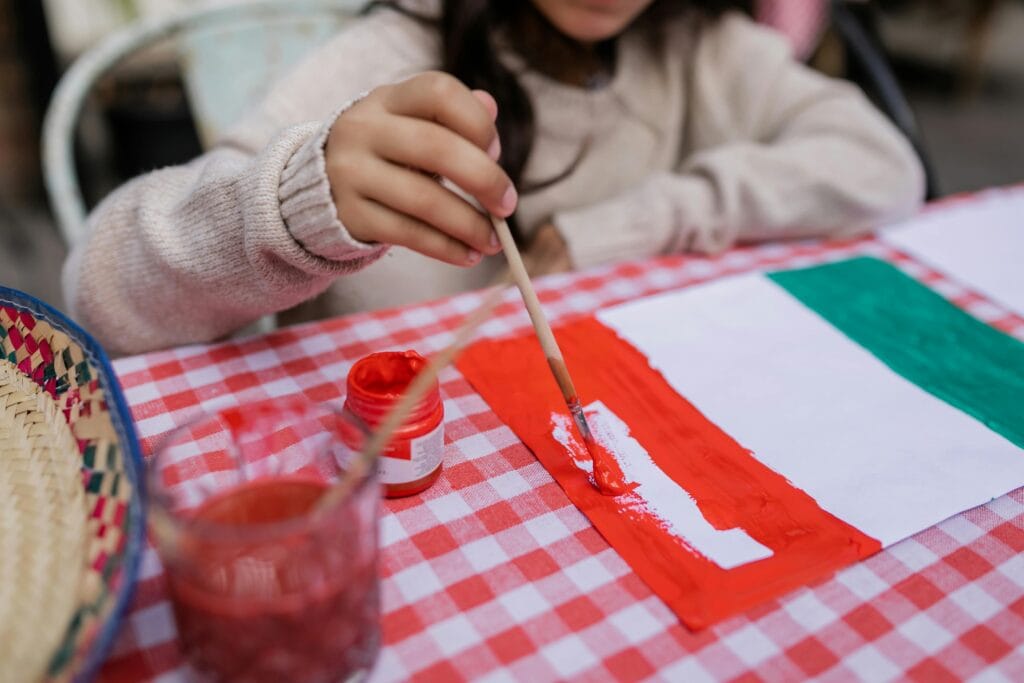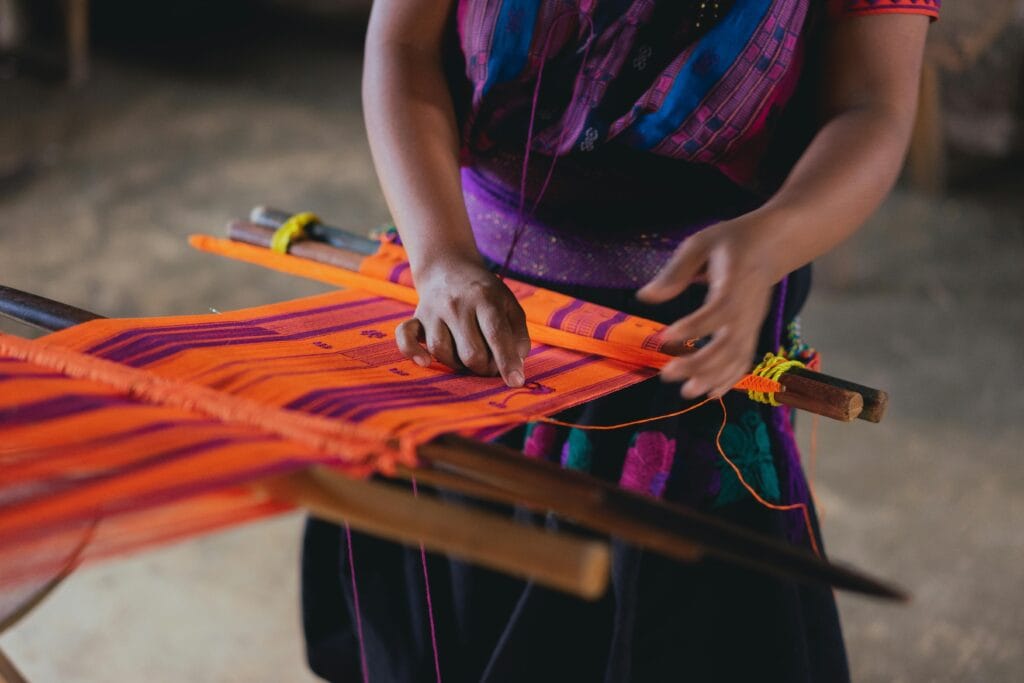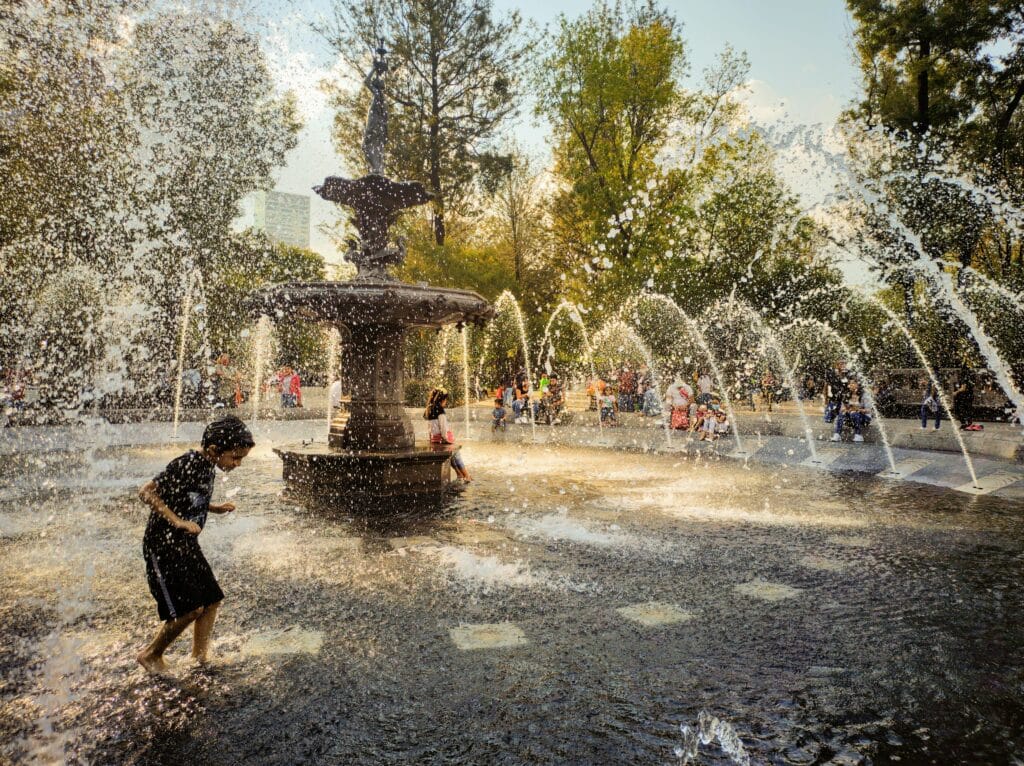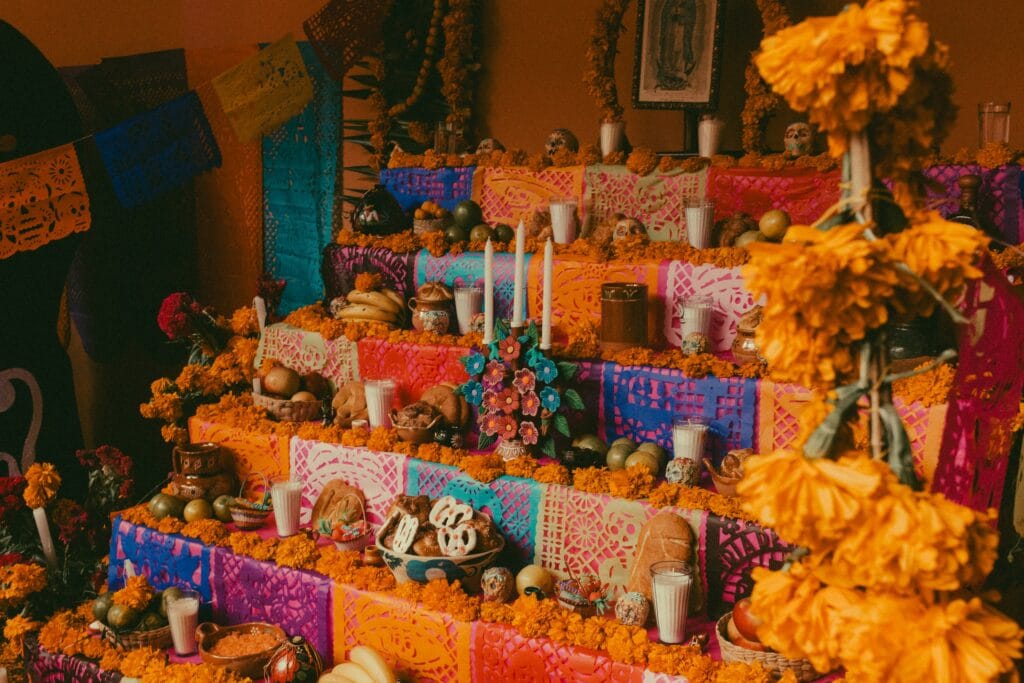How Cultural Immersion Shapes Young Minds
Beyond the resort kids’ clubs lies a world of discovery where ancient traditions, vibrant celebrations, and daily life become your family’s most powerful classroom.

The giggles echo across the cobblestone plaza as your six-year-old attempts to mimic the footwork of the local dancers. Nearby, your ten-year-old practices carefully formed Spanish phrases with an elderly artisan who beams with encouragement. This isn’t the Mexico of all-inclusive buffets and chlorinated pools. This is Mexico at its most authentic—where cultural immersion becomes your family’s greatest adventure and most lasting souvenir.
While resort vacations offer predictability and ease, venturing into Mexico’s cultural heart rewards families with something far more valuable: perspective, connection, and the kind of education no classroom can provide. As parents increasingly seek meaningful travel experiences that shape worldviews and create lasting memories, Mexico stands as an ideal destination where accessibility meets authenticity.
How Cultural Immersion Shapes Young Minds
Child development experts have long recognized that exposure to different cultures during formative years builds critical cognitive and emotional skills. Dr. William Damon, director of the Stanford Center on Adolescence, notes that children who engage with different cultural perspectives develop stronger empathy, adaptability, and problem-solving abilities.
In Mexico, these benefits materialize organically. When children observe different family structures, experience new social customs, or navigate unfamiliar environments, their brains create new neural pathways. These connections serve them throughout life, fostering cultural intelligence that has become essential in our interconnected world.
The experiential learning that happens when your child helps press tortillas alongside a local grandmother or deciphers Maya glyphs at an archaeological site engages multiple senses, making lessons stick in ways traditional education rarely achieves. Mexican culture—with its emphasis on family, community celebration, and intergenerational wisdom—provides natural entry points for children of all ages.

Regional Destinations Where Families Thrive
Central Highlands: Guanajuato & San Miguel de Allende
The colorful colonial cities of the Central Highlands offer pedestrian-friendly historic centers where families can wander safely among UNESCO World Heritage architecture. In Guanajuato, the subterranean passageways that run beneath the city transform mundane walks into underground adventures. The weekly callejoneadas—musical processions through narrow alleyways—captivate children as costumed performers tell stories of local legends.
In San Miguel de Allende, El Parque Benito Juárez provides green space for children to play alongside local families, while the nearby Fábrica La Aurora (a converted textile factory) houses artist studios where kids can watch craftspeople at work. Both cities host frequent festivals where Mexican families gather, creating natural opportunities for cultural exchange.
Oaxaca: Indigenous Traditions & Artistic Expression
Few destinations offer Oaxaca’s remarkable concentration of living indigenous traditions. In the central valleys, families can visit villages where specific crafts have been perfected over centuries—black clay pottery in San Bartolo Coyotepec, fantastical alebrije sculptures in San Martín Tilcajete, and hand-woven textiles in Teotitlán del Valle.
The Ethnobotanical Garden adjacent to Santo Domingo Cultural Center offers guided tours where children learn about the region’s remarkable biodiversity and its relationship to Oaxacan cultures. During major festivals like Guelaguetza (July) or Día de los Muertos (November), the entire city becomes an immersive classroom where concepts of celebration, remembrance, and community take vibrant form.
Yucatán Peninsula: Maya Heritage & Natural Wonders
Beyond the beach resorts of Quintana Roo lies the cultural heart of the Yucatán. In Mérida, the state capital, Sunday activities transform the historic center into a family playground with free concerts, dance performances, and local market stalls. The nearby yellow city of Izamal, with its massive monastery built atop a Maya pyramid, illustrates the fascinating blending of Indigenous and European influences.
Lesser-known Maya sites like Ek Balam offer children the rare opportunity to climb ancient structures (increasingly restricted at larger sites) and imagine life during the civilization’s height. Cenotes—natural limestone sinkholes filled with crystal-clear water—combine scientific learning about geology with swimming adventures that feel magical to young travelers.
Kid-Friendly Cultural Activities That Educate and Entertain
Cooking Classes & Market Tours
Mexican cuisine is a natural gateway to cultural understanding. Many cooking schools welcome families, adapting experiences for various ages. At Seasons of My Heart in Oaxaca, children as young as eight can learn to make simple dishes like tostadas or agua fresca. The experience typically begins with a market tour where kids practice Spanish numbers while counting out pesos for ingredients.
In Mexico City, the massive Mercado de la Merced becomes a sensory treasure hunt when you challenge children to find the most unusual fruit or identify spices by smell. The payoff comes when they taste the results of their culinary adventures—often surprising parents by embracing new flavors when they’ve participated in the preparation.
Artisan Workshops & Hands-On Crafts
Throughout Mexico, traditional craftspeople increasingly offer workshops where families can try ancient techniques. In Pátzcuaro, Michoacán, children can paint simple designs on wooden toys under the guidance of local artisans known for their distinctive style. In Puebla, families can visit ceramic studios where artists demonstrate the intricate patterns of talavera pottery, then try their hand at painting pre-fired pieces.
The Paper Mache Museum (MONPAP) in San Miguel de Allende offers workshops where even young children can create iconic Mexican folk art pieces to take home. These hands-on experiences connect children to cultural traditions through the universal language of creativity.

Living History & Archaeological Sites
Mexico’s archaeological sites offer immersive history lessons, but choosing the right ones makes all the difference for families. While Chichen Itza impresses with its scale, sites like Uxmal (Yucatán) and Palenque (Chiapas) often provide more engaging experiences for children, with fewer crowds and more opportunities to explore.
Many sites now offer family-specific tours or activity booklets that transform ancient ruins into engaging mysteries to solve. At Teotihuacan near Mexico City, guides specializing in children’s programming explain the ancient metropolis through stories and interactive questions rather than dry historical details.
Language Learning Across Ages
Preschoolers (Ages 2-5): Playful Immersion
For the youngest travelers, language acquisition happens organically through play. Seek out local playgrounds where your children can interact with Mexican peers. Simple picture books in Spanish, available at any local bookstore, become treasured souvenirs that continue the learning journey at home.
Many Mexican cities have interactive children’s museums (like Papalote Museo del Niño in Mexico City) where exhibits incorporate Spanish vocabulary naturally. These spaces let children absorb language in context without formal instruction.
Elementary Age (Ages 6-12): Structured Discovery
Children in this age range benefit from more intentional language experiences. Short-term language schools in places like Oaxaca, Guanajuato, or Cuernavaca offer family programs where parents and children learn simultaneously but in age-appropriate ways.
Create simple scavenger hunts where children must use Spanish phrases to collect information or items. Reward progress with experiences rather than things—perhaps a special dessert when they successfully order their own meal in Spanish.
Teenagers (Ages 13-18): Immersive Independence
For adolescents, language learning becomes more sophisticated. Consider family homestays where teenagers have “language buddies” near their own age, or service-learning projects where they work alongside Mexican peers on community initiatives.
Several organizations facilitate meaningful exchange programs, from afternoon activities to weeklong projects. In San Miguel de Allende, the Biblioteca Pública pairs visiting teens with local students for language tandems that often blossom into cross-cultural friendships.
Navigating Food Preferences While Exploring Local Cuisine
Creating Culinary Comfort Zones
Even adventurous families occasionally face mealtime challenges. Instead of retreating to familiar international chains, seek out fondas (small family restaurants) where simple, recognizable options like quesadillas or plain grilled meats provide safe choices alongside more adventurous offerings.
Mexican breakfast often includes familiar elements—fresh fruit, eggs, beans—making morning meals an ideal starting point for culinary exploration. Markets with multiple food stalls allow each family member to choose their own adventure, creating low-pressure opportunities to try new things.
Food as Cultural Storytelling
Frame unfamiliar foods as stories rather than obligations. In Michoacán, explain how the region’s avocados grow in volcanic soil before trying fresh guacamole. In coastal Nayarit, talk about how generations of fishermen have caught the fish now in your ceviche.
Visit chocolate museums in Oaxaca or Mexico City where children learn how ancient Mesoamericans considered cacao sacred before sampling different preparations. When children understand the context of what they’re eating, they’re more likely to approach new foods with curiosity rather than suspicion.

Participatory Food Experiences
Look beyond restaurant dining to experiences where children actively engage with food traditions. Many communities welcome visitors to participate in seasonal food rituals—making pozole for special celebrations, harvesting agave with jimadores, or pressing sugar cane for fresh juice.
These participatory experiences transform passive consumption into memorable cultural connections. Children who might reject certain flavors at a restaurant table often embrace the same ingredients when they’ve helped create the final dish.
Health and Safety: Practical Considerations
Medical Preparations & Precautions
Mexico’s major cities and tourism centers offer excellent medical care, but preparation ensures peace of mind. Beyond standard travel insurance, bring a clearly organized medical kit with familiar medications your children may need—foreign equivalents exist but finding them under pressure adds unnecessary stress.
Stay vigilantly hydrated, particularly when traveling in hot regions or at higher altitudes. Dehydration underlies many travel ailments and affects children more quickly than adults. Established bottled water brands are widely available throughout Mexico.
Navigating Urban Environments
Mexico’s cities offer rich cultural experiences but require similar precautions to urban environments worldwide. Use rideshare apps like Uber for transportation after dark rather than hailing street taxis in unfamiliar areas. These services provide tracking, fixed pricing, and eliminate language barriers when explaining destinations.
Choose accommodations in central, well-traveled neighborhoods where families can comfortably walk to restaurants and attractions. In Mexico City, areas like Roma, Condesa, and Coyoacán offer tree-lined streets and parks where local families gather—natural indicators of safety and suitability.
Rural Explorations & Road Trips
Venturing into rural Mexico rewards families with authentic experiences but requires additional planning. The toll highways (cuotas) connecting major destinations offer well-maintained infrastructure, regular service areas, and dedicated police patrols. When traveling with children, these routes justify their modest fees through added security and convenience.
In remote areas, consider hiring local guides from reputable agencies—they provide cultural context while navigating unfamiliar territory and unexpected roadblocks. Many rural communities have established community tourism initiatives where local families coordinate authentic experiences with attention to visitor needs.
Making Meaningful Connections
Community-Based Tourism
Throughout Mexico, indigenous communities have developed tourism cooperatives that welcome families while ensuring economic benefits remain local. In Chiapas, families can stay in cabañas managed by Lacandon Maya communities in the Montes Azules Biosphere Reserve. In Hidalgo, the Hñahñu community runs eco-lodges near the Grutas de Tolantongo, where visitors can learn traditional textile techniques and agricultural practices.
These initiatives create structured yet authentic ways for visitor families to connect with local families, often including shared meals, craft demonstrations, and opportunities for children to play together despite language differences.
Educational Exchanges & School Visits
For deeper immersion, arrange brief educational exchanges through organizations like Traveling Classrooms, which coordinates half-day school visits throughout Mexico. These programs typically involve sharing cultural presentations, participating in classroom activities, and engaging in organized play that bridges cultural differences.
These exchanges benefit all involved—Mexican schools gain international perspective while visiting children experience daily life in a completely different educational environment. Even short interactions often become trip highlights that children reference for years afterward.
Festivals & Community Celebrations
Time your visit to coincide with local festivals for natural opportunities to engage with Mexican families. During these celebrations, public spaces become communal gathering places where the usual barriers between visitors and locals temporarily dissolve.
Small town patron saint festivals offer more authentic experiences than commercialized versions of major holidays. In these community celebrations, families often welcome respectful visitors to participate in traditions like processions, dance performances, and shared meals.
Educational Takeaways: Beyond the Vacation
Documenting the Journey
Help children process their experiences through age-appropriate documentation projects. Younger kids might collect objects for a travel memory box—ticket stubs, pressed flowers, or market trinkets—while older children can maintain journals with observations about cultural differences and similarities.
Photography assignments focusing on specific themes help children observe more intentionally. Challenges like “capture five different types of transportation” or “photograph what families do together” encourage deeper observation of daily life rather than just tourist attractions.
Extending Learning at Home
The most valuable cultural immersion continues after returning home. Maintain connections through regular video calls with Mexican friends or language exchange partners. Continue cooking dishes you learned together, gradually incorporating these recipes into your regular meal rotation.
Create space in your home for Mexican art, textiles, or crafts acquired during your travels, using these objects as touchpoints for ongoing conversations about cultural appreciation versus appropriation—discussions that grow more sophisticated as children mature.

Fostering Global Citizenship
Perhaps the most significant outcome of cultural immersion in Mexico is the development of global citizenship. Children who have meaningfully engaged with another culture develop the ability to see beyond stereotypes, questioning single narratives about places and people.
This perspective becomes increasingly valuable in a world where cross-cultural competence determines many educational and professional opportunities. More importantly, it nurtures the empathy and understanding our world so desperately needs—qualities that begin forming during these formative family experiences.
For personalized guidance on creating your family’s cultural immersion journey in Mexico, join our community of conscious travelers. Our membership includes regional planning guides, language learning resources for children, and direct connections with local families throughout Mexico who welcome cultural exchange.
¡Buen viaje!


